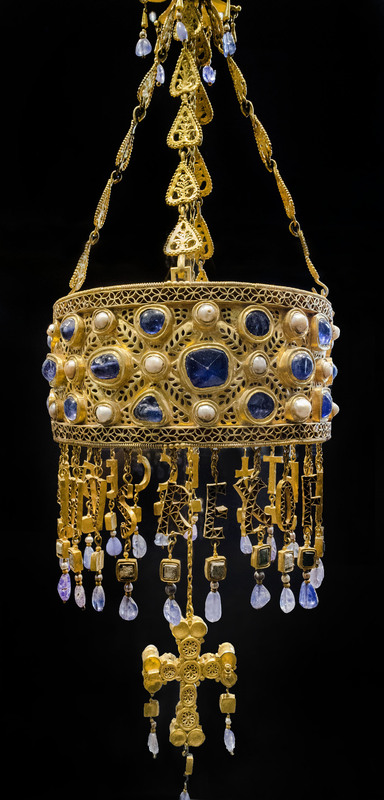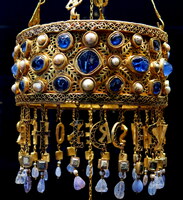Crown of Recceswinth
Date:
649–72
Location or Findspot (Modern-Day Country):
Spain
Medium:
Gold,
Rock crystal,
Pearl,
Gems
Dimensions:
height of 10 cm and diameter of 20.60 cm (for the diadem alone)
Description:
The Visigothic Treasure of Guarrazar, which was discovered in 1858 in La Fuente de Guarrazar (near Toledo), included crosses, pendants, and votive crowns, one of which had dangling ornaments naming King Recceswinth (r. 649–72): "+ [R]ECCESVINTHVS REX OFFERET" (King Recceswinth offered [it]). Votive crowns, as the name implies, were votives (gifts) in the shape of a crown. As can be seen in early Byzantine mosaics (e.g., Sant'Apollinare Nuovo in Ravenna), they were not worn but rather suspended, often above an altar. The votive crown of King Recceswinth is a Visigothic example of this Byzantine tradition, and also shows the influence of Byzantine style and techniques in the wider Mediterranean world. Cloisonné gems run around the edge of a flat sheet of gold, and additional gems (e.g., pearls and sapphires) fill the crown's openwork decoration.
Relevant Textbook Chapter(s):
3,
4
Repository and Online Resources:
• The crown of Recceswinth is now in the Museo Arqueológico Nacional, Madrid (71202).
Image Credits:
Wikimedia Commons


